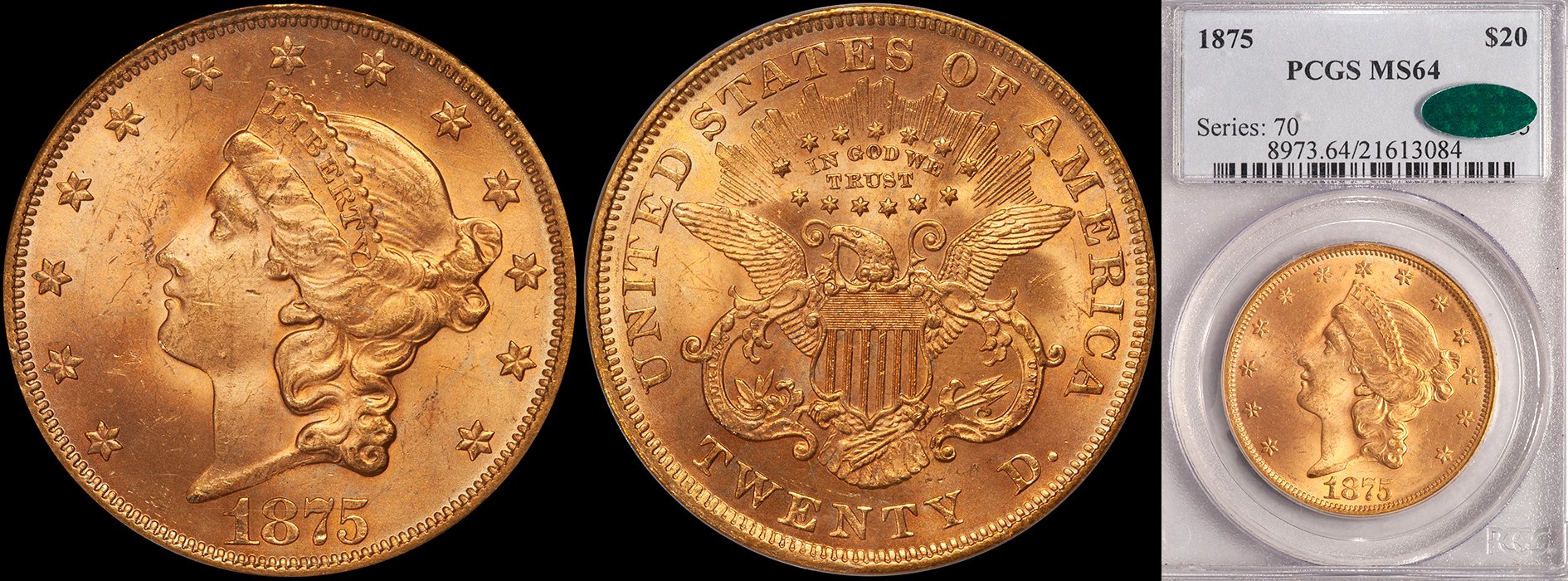When Did Type One Double Eagles Become Popular?
/Type One Liberty Head double eagles, struck from 1850 through 1866, are today one of the most popular gold coins from the standpoint of date collecting. Despite the presence of numerous mid-to-high five figure and even a few six figure issues, many serious date collectors of these coins are active in the 2020 coin market.
However, this series was not always popular. There were a few specialized collectors who were ahead of the curve in the post-World War II era, but in looking through auction catalogs from this time, we find very few Type One specialists. Collectors who had wide-ranging collections of US gold coins—such as the Norwebs, James Stack, and Louis Eliasberg—had comprehensive sets of Liberty Head double eagles but none of them could be called specialists.
It really took a series of three events which occurred from 1999 to 2001 for the groundwork to be set for wide-ranging specialization in Type One Liberty Head double eagles.
1865-S $20.00 PCGS MS64 CAC, ex S.S. Brother Jonathan
The first occurred in 1999 when the shipwreck of the S.S. Brother Jonathan entered the market via an auction conducted by Bowers and Merena. This ship was a paddle steamer carrying a sizable number of newly-struck San Francisco double eagles (and other types) which sank on July 30, 1865 off the coast of Crescent City, CA.
The primary cargo was a group of over 1,000 high quality double eagles dated 1865-S. This date had formerly been regarded as rare to very rare in Uncirculated, but collectors were now afforded the opportunity to acquire individual coins ranging in grade from MS60 to MS66 with the majority graded MS63 and MS64 by PCGS. These coins represented exceptional quality for a San Francisco double eagle of this type, and it ignited a considerable amount of interest.
1853 $20.00 PCGS MS62, ex Bass Collection
The second event was the three sessions of the Harry Bass Collection which were conducted by Bowers and Merena in 2000 and 2001. (The first Bass sale, conducted in 1999, was of less interest to dated gold collectors).
Harry Bass, a Dallas collector, assembled an extremely comprehensive set of United States gold coins. Bass was fascinated by die varieties and for many issues he had a number of coins. His set of Liberty Head double eagles was complete and it contained high quality coins; often with nice duplicates.
1857-S $20.00 PCGS MS65 CAC, ex S.S. Central America
The third—and most significant—event was the discovery and eventual sale of the coins located as part of the shipwreck of the S.S. Central America. These coins began slowly entering the market in 2000, but by 2001-2002 there were thousands of coins available to collectors.
The Liberty Head double eagle which was most prevalent in this shipwreck was the 1857-S. This date was formerly very scarce in Uncirculated but thousands of examples came onto the market in grades as high as MS67. The coins from this wreck were extremely well-preserved and were expertly conserved prior to being graded by PCGS. All of a sudden, collectors who would never have been able to own a Gem Type One were now able to buy superb pieces at affordable price levels.
The marketing for this group of double eagles (as well as a large quantity of massive ingots and gold bars) was masterful and hundreds of serious collectors were created. The prevailing thought was that if someone entered the market as an investor and bought a nice 1857-S double eagle from the shipwreck, by providing him with massive amounts of research and history, it would be possible to create many new collectors whose interest would extend to other dates from the shipwreck (1855-S and 1856-S), and then onto various other issues.
This strategy worked very well. Two firms, Blanchard & Company from New Orleans, and Monaco Rare Coins from southern California, created hundreds of serious collectors due to their superb marketing which tapped into markets previously unexposed to rare gold coins.
One other important factor was the continued importation of Type One (as well as Type Two and Type Three) double eagles from overseas sources. Thousands of coins were repatriated during the 1990s and early 2000s, and this included rare dates from New Orleans as well as formerly scarce issues from Philadelphia ad San Francisco.
Prior to 2000, the supply of high quality Type One double eagles was so limited that had there been an uptick in demand, not enough coins would have been available to satisfy new collectors. But you had a perfect storm of increased supply coupled with increased demand not to mention a rise in gold prices and considerable mainstream interest in gold as an inflation hedge among hard money advocates.
If I had to pick a single event as the impetus for the surge in interest for these coins, I would go with the discovery of the S.S. Central America. I vividly remember the massive amount of interest these coins generated among collectors and non-collectors alike.
In 2020, Type One Liberty Head double eagles are one of the most popular issues in the rare date gold sector of the coin market. Their popularity has ebbed since 2016 primarily due to prices rising to the point that the middle market collector has been forced into smaller denomination gold series, and because the primary marketing firms who created so many new collectors have moved on to other areas in the market.
If I had to predict the long range future of Type One double eagles, I would say it looks very rosy given the storied history behind these coins, their massive size and gold content, and their currently favorable price levels.
Would you like to collect Type One Liberty Head double eagles? Douglas Winter Numismatics specializes in these coins and we would be happy to help you build an impressive set. Please contact Doug Winter via email (dwn@ont.com) or by phone (214-675-9897) for more information.




















